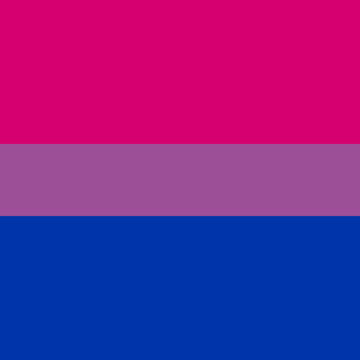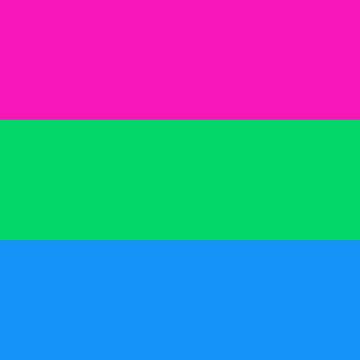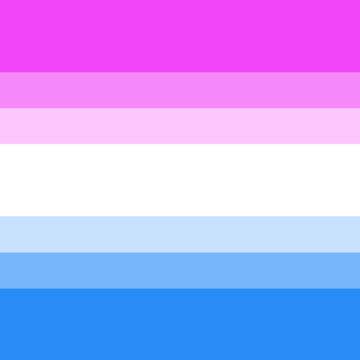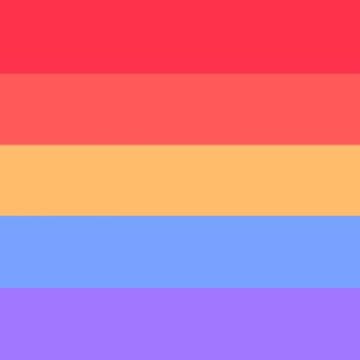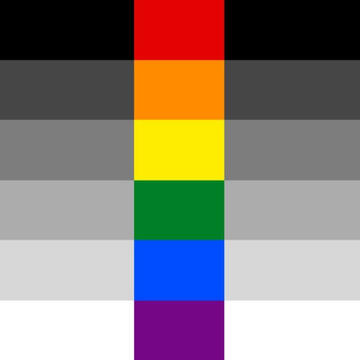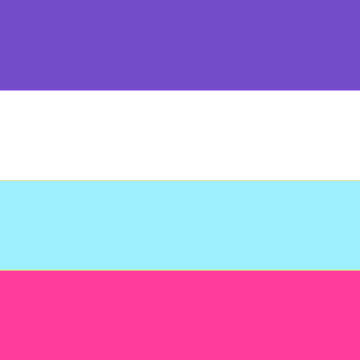The Bi+ Community
INTRODUCTIONWelcome to this educational carrd about different identities in the bi+ community!First I would like to state some things:The Terminology
All labels discussed in this carrd (except bisexuality, multisexuality and queer) are considered a micro-label (a label that falls under a larger umbrella identity, in this case, the bi+ umbrella). Please keep in mind that this is still controversial and the topic of frequent discussion within the community.
The definitions of the labels are based on history and the latest developments.The Layout
For every page, you are given an explanation of the term, common definitions, a historical overview of the usage, common misconceptions and an overview of the flags. Some labels are fairly new and therefore don't have a historical overview.Resources
All the sources are listed in the end note.Labeling
This carrd is about the different labels under the bi+ umbrella. However, there are also people who choose to not label themselves. This is completely valid. If you are here because you are questioning, feel free to educate yourself on the terms but don't feel pressured to pick one. Take your time and do what you feel most comfortable with.Asexual Inclusivity
All labels talked about in this carrd refer to both romantic and sexual attraction. You can modify the terms with the suffix "romantic" if you only want to refer to romantic attraction.Controversy & Respect
Some of the labels discussed in this carrd are controversial in the community because of the history or because of the implications of the usage. All I ask is for the reader to respect others and the labels they choose to use and to read this carrd with an open mind.
Thank you in advance!
BISEXUALITYBisexuality is a broad label encompassing attraction to multiple genders (most often all) in various ways.Common definitions include:
- attraction to all genders
- attraction to multiple genders
- attraction to two or more genders
- attraction to the same/similar genders and different genders
- attraction regardless of gender
- attraction with/without a preference
HISTORY
| 1800s | Bisexuality is used as a term for intersex people and hermaphroditic or monoicous plants. |
| 1892 | Bisexuality is used to define sexuality for the first time as a term for attraction to men and women by neurologist Charles Gilbert Chaddock. |
| 1940s | Bisexual sexologist Alfred Kinsey develops the Kinsey Scale which shows sexuality as a spectrum from completely heterosexual to completely homosexual, but he is against the new usage of "bisexual" to describe this. |
| 1960s | Bisexual activism (and LGBT activism in general) gets more prominent which causes the bisexual term to get more inclusive of non-binary and intersex identities. |
| 1970s | Bisexuality is used as a term for attraction regardless of sex (and gender). |
| 1990 | The bisexual manifesto gets published and bisexuality is once again defined as a whole, fluid identity that's not binary or duogamous in nature. |
MISCONCEPTIONS
Bisexuality is binary/duogamous/attraction to men and women only/exclusionary towards trans and non-binary people because "bi" means two
Bisexuality has included people outside of the gender binary for a long time, especially after bi activism became more prominent. Trans people, intersex people and non-binary people are included in bisexuality. The only reason "bi" is used in the term is because of its history. Now the "two" most commonly refers to attraction to same/similar genders and different genders.Bisexuality is the same for everyone
Bisexuality is a fluid and broad label and everyone will define their bisexuality differently. For some bisexual people, gender will play a role and they might have a preference, for others gender doesn't play a role at all.Bisexual people always have a preference or lean/Gender always plays a role in bisexual attraction
This is often used to differentiate pansexuality from bisexuality. Pansexuality would then be attraction regardless of gender and bisexuality would be attraction based on gender. This is however not the case. Bisexuality is a broad label which encompasses attraction with a preference and without and attraction with gender playing a role and without gender playing a role.
PRIDE FLAGS

bisexual flag (1998)
redesigned bi flag
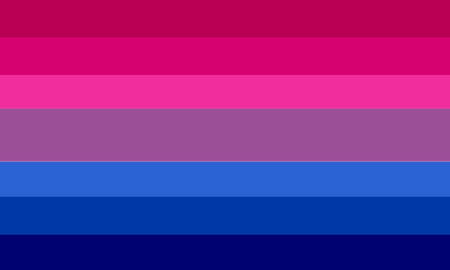
PANSEXUALITYPansexuality is a micro-label under the bi+ umbrella that refers to attraction to all genders and regardless of gender.Common definitions include:
- attraction to all genders
- attraction regardless of gender
- gender-blind attraction
- attraction to personality first and foremost
HISTORY
Warning: This section will include definitions that are biphobic and transphobic.
| 1917 | Sigmund Freud uses the term "pansexualism" for his theory that sexual impulse has a primal role in human behaviour. |
| 1920s/1930s | Pansexuality is used as a term for those who "love across labels and boundaries" in Harlem. |
| 1973 | Pansexuality is first used as a label for sexuality by James Nolan. It is defined as attraction to men, women and "the third gender" and is marketed as a more inclusive and newer version of bisexuality. The idea that bisexuality is binary begins to emerge due to this. |
| 1980s | The term "pansexual" is picked up by BDSM groups to refer to people who are into BDSM or polyamory. |
| 1990 | Tom Geller defines pansexuality as 1) attraction to anything including inanimate objects and animals and 2) attraction including people in the gender minority. |
| 2000s/2010s | Due to the rise of the internet the term "pansexual" spreads further. The term changes into "attraction to all genders, including transgender, androgynous and gender-fluid people" in online communities. Pansexuality is still marketed as a more inclusive term than bisexuality. |
| 2014 | Pansexuality defined as "attraction to personality rather than sex or gender" begins to emerge. |
MISCONCEPTIONS
Pansexuality means attraction to men, women and trans people/non-binary people
Sadly, this was a definition that has been used in the past (and is sometimes still used). However, nowadays transgender people and non-binary people aren't seen as a "third gender" anymore and are included in every sexuality. Pansexuality got defined further and slowly moved away from that definition. Nowadays it focusses more on how a person experiences attraction rather than who to.Pansexuality is bi people wanting to feel special
Pansexuality is a valid micro-label. Because bisexuality is such a broad label that can encompass many different types of attraction, some people prefer identifying as something that's more direct.Pansexuality is biphobic
Pansexuality is a term that arrived from a biphobic background seeing as its differentiation is based on erasing a part of bisexuality (namely attraction outside the gender binary and regardless of gender). However, if the term is used as a micro-label, it doesn't take away from bisexuality and only adds to the experience of multigender attracted people because they can pick whichever label they feel most comfortable with.
PRIDE FLAGS
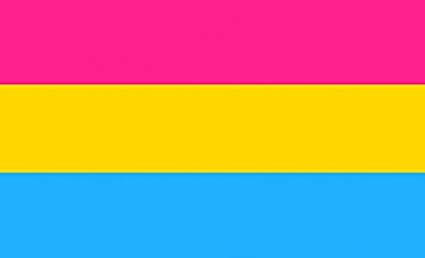



pansexual flag (2010s)
redesigned pansexual flag (2020)
another redesigned pansexual flag (2020)
and another redesigned pansexual flag (2020)
OMNISEXUALITYOmnisexuality is a micro-label under the bi+ umbrella that refers to attraction to all genders, with gender playing a role in that attraction.Common definitions include:
- attraction to all genders
- attraction with a preference/lean
- attraction where the act of being attracted feels different for each gender you're attracted to
HISTORY
| 1959 | The word "omnisexual" is used for the first time by beat poet Lawrence Lipton to describe "the omnisexuality of the primitive animistic religions" |
| 1984 | Omnisexuality is defined as "the state of being attracted to all sexes" in a book on human sexuality. |
| 1990s | The term spreads further due to the popularity of works by poet Walt Whitman, who expresses sexual attraction towards all genders and sometimes even the sea or the Earth throughout his writing. |
| 2000s | Due to the rise of the internet and the coming out of several celebrities as pansexual, the term omnisexual gets more popular. The community also differentiates themselves from pansexuality by defining omnisexuality as "attraction to all genders with gender playing a role". |
MISCONCEPTIONS
Omnisexuality and pansexuality are the same
This is a common misconception due to misinformation. Both omnisexuality and pansexuality refer to attraction to all genders, however in omnisexuality that gender does play a role and in pansexuality it doesn't. This allows omnisexual people to have preferences while pansexual people can't.
PRIDE FLAGS
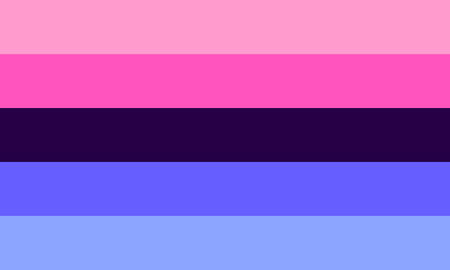
omnisexual flag
POLYSEXUALITYPolysexuality is a micro-label under the bi+ umbrella that refers to attraction to multiple genders but not all.Common definitions include:
- attraction to multiple genders, but not all
- attraction to many genders, but not all
HISTORY
| 1920s | Polysexuality is used as a term for polyamory. |
| 2010s | Polysexuality gets redefined as a label for attraction to multiple genders but not all genders, based on different definitions of bisexuality. |
MISCONCEPTIONS
Polysexuality means you want to date multiple people at the same time
This is a common misconception due to the terms polysexual, polyamorous and polygamous sounding similar.
Polygamy is being a relationship where you're married to multiple people, often with inequality in the relationship.
Polyamory is being in a relationship with multiple people in a broader way.
Polysexuality is feeling attracted to multiple genders but not all as described here.
PRIDE FLAGS

polysexual flag (2012)
HOMOFLEXIBILITYHomoflexible is a micro-label under the bi+ umbrella that refers to attraction to the same/similar genders and different genders although lesser.Common definitions include:
- attraction mostly to the same/similar genders with occasional tendencies for different gender attraction
- attraction to the same/similar gender and sometimes different genders
- attraction that's primarily homosexual but with a limited amount of attraction to different genders
MISCONCEPTIONS
Homoflexibility is just experimenting
Some people who are questioning their sexuality choose to use 'homoflexiblity' to express that, but some people do use it as a permanent term. They are under the bisexual umbrella but just have a very strong lean.Homoflexibility is problematic because it makes gay people seem as if they're secretly straight in a way
No label should be overgeneralised. Everyone defines their own sexuality differently. Just because some people identify with the homoflexible label doesn't mean that each gay/lesbian person is actually homoflexible.
PRIDE FLAGS
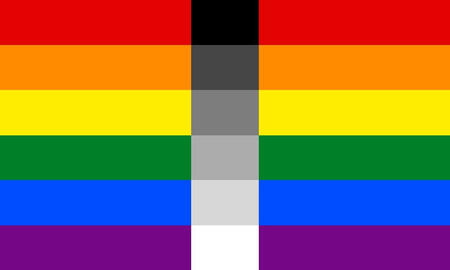
homoflexible flag
HETEROFLEXIBILITYHeteroflexible is a micro-label under the bi+ umbrella that refers to attraction to different genders and same/similar genders although lesser.Common definitions include:
- attraction mostly to the different genders with occasional tendencies for same/similar gender attraction
- attraction to different genders and sometimes the same/similar genders
- attraction that's primarily heterosexual but with a limited amount of attraction to the same/similar genders
MISCONCEPTIONS
Heteroflexibility is just experimenting
Some people who are questioning their sexuality choose to use 'heteroflexible' to express that, but some people do use it as a permanent term. They are under the bisexual umbrella but just have a very strong lean.Heteroflexible people are just straight people invading the LGBT community
Heteroflexible refers to people who have a very strong lean towards different genders. However, they still feel attracted to the same/similar genders as well, which makes them part of the LGBT community. It may differ per person whether they would consider themselves LGBT.
PRIDE FLAGS
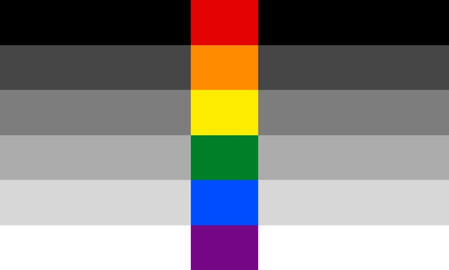
heteroflexible flag
BICURIOUSITYBicurious is a term that falls under the bisexual umbrella. It is used to refer to someone who is questioning their sexual identity but who leans towards labels under the bisexual spectrum.Common definitions include:
- curiosity about exploring or experimenting with bisexuality
- interest in exploring attraction to same/similar and different genders
MISCONCEPTIONS
Bicuriousity is biphobic because it implies experimentation is needed in order to be sure of your bisexuality
Some people who are questioning use the term to show that they are open to experimentation. However, not all experimentation and questioning is necessarily sexual or romantic. It can also be doing your research and trying out different labels for yourself, which is what most people use the term bicurious for.Bicurious people are just straight people invading the LGBT community
Bicurious is a term used for people who are questioning. Some of them will turn out to be straight but a lot of them will turn out to be queer. Not immediately identifying with a definite queer label doesn't make that person any less queer.
PRIDE FLAGS
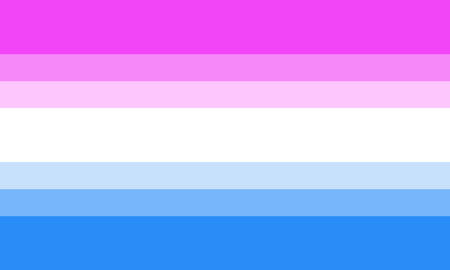
bicurious flag
QUEERQueer is an umbrella term used to refer to anyone who is not straight and cisgender. People outside the bisexual spectrum can also use this term. Some people under the bisexual spectrum decide to use it in order to evade other more specific terms.Common definitions (when relating to sexuality specifically) include:
- attraction that isn't heterosexual
- broadly same/similar gender attraction
- not straight
MISCONCEPTIONS
Queer is a slur and shouldn't be used
Queer indeed used to be a slur used against the LGBT community. However, it has since been reclaimed and some people choose to use it as a label. Everyone is allowed to make their own choices about whether they feel comfortable with the term relating to them or not.
PRIDE FLAGS

queer chevron flag
alternative queer flag
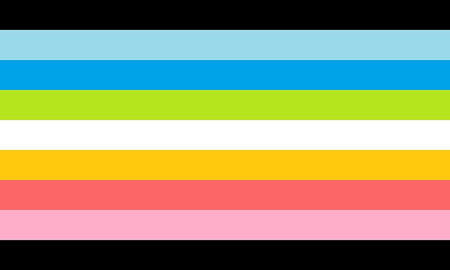
MULTISEXUALITYMultisexual is an umbrella term that refers to attraction to multiple genders. It's often used a synonym to bisexual or as an umbrella term for those who don't see bisexual as an umbrella term, but is sometimes used as a standalone label.Common definitions include:
- attraction to multiple genders
- attraction to all genders
- attraction to the same/similar genders and different genders
- attraction which is affected by different factors
MISCONCEPTIONS
Multisexuality and bisexuality are the same thing
Although they're often used as synonyms because they're both functional as umbrella terms, multisexuality is also used as a standalone label. People adopted the term to mean "attraction where attraction to different genders is affected by many factors" and they then use it as a broad term so they don't have to make a complicated definition by encompassing all these factors.
PRIDE FLAGS
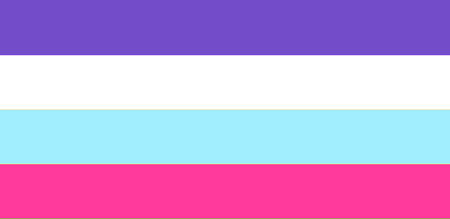
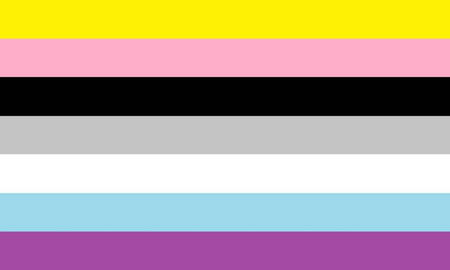
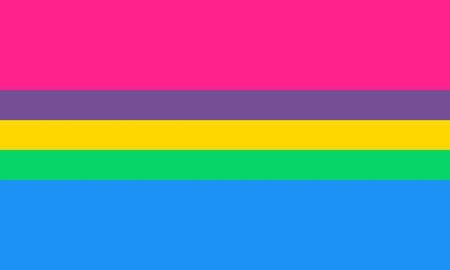
official multisexual flag (2019)
alternative multisexual flag
alternative multisexual flag
END NOTE
Thank you for reading this carrd and educating yourself on the different terms under the bi+ umbrella! It was quite long so I'm glad you took the time out of your day to read all of this. I hope you enjoyed it and learned something new!RESOURCES
bisexuality
- information on bisexuality and biphobia
- information on bisexuality and (internalised) biphobia
- information on bisexuality, bisexual stereotypes and pansexuality
- excerpts on the bisexual label throughout time
- information on bisexuality and internalised biphobia
- information on biphobia
- information on bisexuality
- information on bisexuality as an umbrella termpansexuality
- information on pansexuality throughout time
- more information on pansexuality throughout time
- information on pansexuality and the bisexual manifestoomnisexuality
- information on omnisexuality and the history of itpolysexuality
- information on polysexuality and the history of it
- information on the definition of polysexuality
- information on polysexual history and the polysexual pride flaghomoflexibility
- information on homoflexibility and heteroflexibilityheteroflexibility
- information on homoflexibility and heteroflexibilitybicuriousity
- information on bicuriousity and the possible problematic usage of itqueer
- information on the usage of queer
- information on queer as a label and the flagsmultisexuality
- information on multisexuality and the flags
- information on multisexuality
